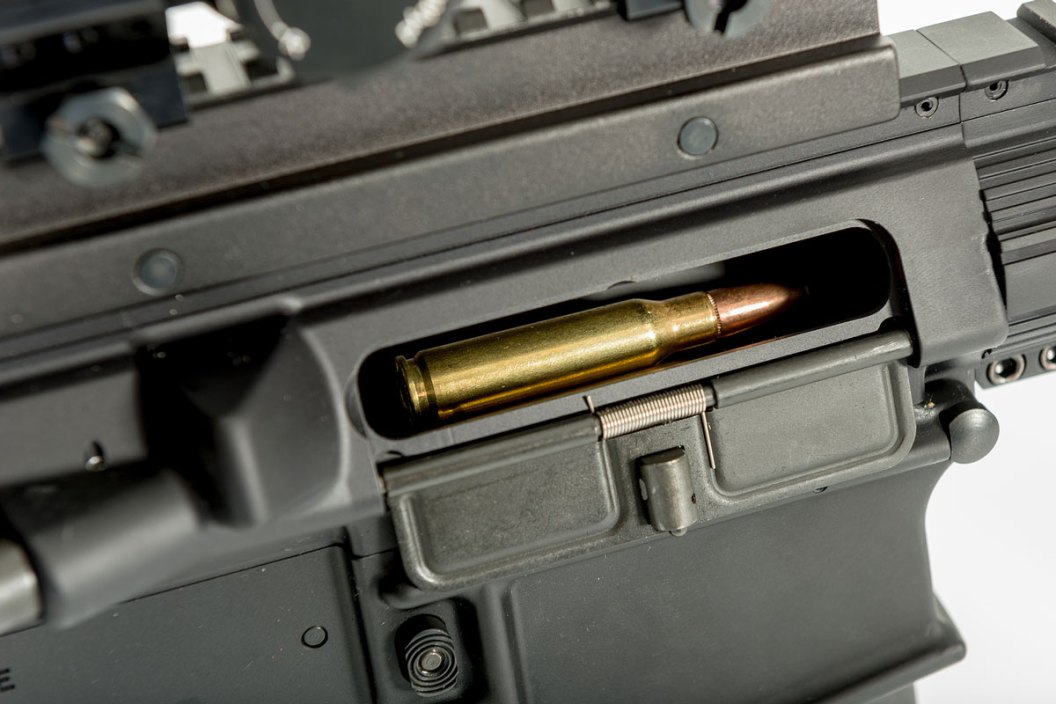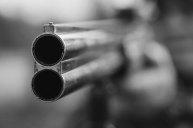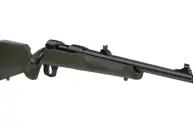These semi-autos have taken more game and inspired more future gun designs than any others.
While semi-automatic rifles are widely accepted as self-defense and home-defense tools, they have also had their place as hunting arms for about a century.
Before the semi-auto M1 Garand was adopted by the U.S. military, semi-auto rifles had already been carried by sportsmen in the U.S. for a couple decades.
Hunters don't usually get a second shot, and if they do, there typically isn't a very wide window. And, nothing offers faster follow-up shots than a semi-auto, except maybe a double-barrel gun.
AR-10
The AR-10 is one of the most versatile rifle platforms ever created. Originally developed by Eugene Stoner in the 1950s, today it can serve as a marksman rifle for military applications or as a sniper rifle.
Chambered for contemporary cartridges like the 6.5 Creedmoor or even the original .308 Winchester, it also makes a fine medium- to long-range hunting rifle for civilians, as well as a defensive firearm for some.
The detachable box magazine makes reloads simple and fast, and allows for virtually any magazine capacity the user desires.
The versatility and durability of the AR-10 platform will ensure its longevity as a prominent hunting platform. In fact AR-10 rifles can serve the needs of deer hunters while also fitting the bill for big game hunting.
Most ARs come standard with a threaded barrel, so muzzle devices and suppressors can be readily attached and handguards on modern AR-10s make attaching a bipod and other accessories a breeze.
Browning BAR
The Browning Automatic Rifle may be the most popular semi-automatic hunting rifle of all time, used as a reliable deer rifle by many whitetail hunters over the years. It was produced by the Browning Arms company in Belgium and should not be confused with the M1918 military rifle, which was also known as the BAR.
The two designs have nothing in common other than their names. John M. Browning's grandson, Bruce Browning, was instrumental in bring the BAR to market, along with a team of automatic firearm experts in the FN factory in Belgium, where it was produced until assembly was transferred to Portugal in the early 1970s, where it is still assembled today.
When it was introduced, it was the only autoloading centerfire rifle that was chambered in magnum cartridges that were becoming increasingly popular with hunters. It remained so for about two decades. It used a seven-lug locking rotary bolt that provided strength comparable to that of a bolt gun.
Several versions of the BAR have been produced over the years, including a special BAR made just for law enforcement in the early '70s that was chambered in .308 Winchester/7.62 NATO and featured a modified FN FAL magazine. It never went into production.
There was also a pump-action version of the BAR introduced in 1997 called the BPR and was meant to allow hunters in states that were passing restrictive laws against semi-auto rifles to still own a BAR.
The Acera was a straight-pull bolt action version of the BAR made for the European market. It was also released in the U.S. but didn't sell well, making it a rare collector's item today.
Remington Model 8/81
Another gun designed by John M. Browning, this rifle was first introduced in 1905 and was the first commercially successful semi-automatic centerfire rifle. The carbine has a very familiar receiver shape with the same "humpback" present on Browning's Auto-5 semi-auto shotgun. The name was changed to Model 8 in 1911. Outside of the U.S., the rifle was made by FN in Belgium as the FN Browning 1900.
Over 80,000 Model 8s were produced and it was a popular hunting rifle in the U.S. It had a fixed 5-round magazine and the bolt locked open after the last round was fired. It was also a take-down rifle that could be broken down without tools for easy transport.
Remington actually created four new cartridges for the Model 8: .25 Remington, .30 Remington, .32 Remington, and .35 Remington—all of which were rimless designs that would feed reliably from the rifle's box magazine.
In 1936, Remington discontinued the Model 8 and replaced it with the improved Model 81 Woodsmaster, which was produced until 1950.
NEXT: HENRY LEVER GUNS AREN'T JUST FOR COWBOYS
WATCH





